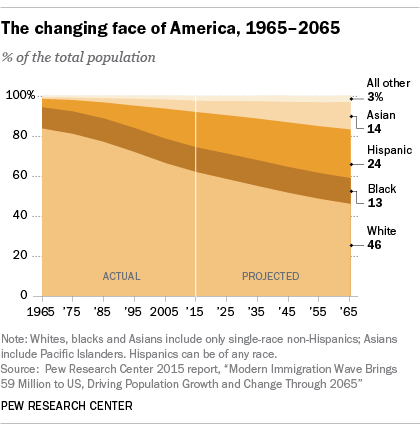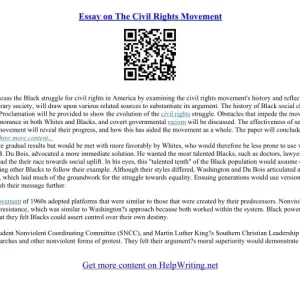
The Changing Face of the South: Demographic Shifts and Cultural Impacts
The American South, a region historically defined by its agrarian past and distinct cultural identity, is undergoing a dramatic transformation. Demographic shifts are reshaping its cities, towns, and the very fabric of Southern society, leading to a fascinating interplay of tradition and modernity, conflict and collaboration. This evolution, far from being a monolithic process, is a vibrant mosaic of changing demographics and their interwoven cultural impacts.
The Great Migration’s Echo and a New Influx:
For decades, the South experienced a significant outward migration, often dubbed the “Great Migration,” as African Americans sought better opportunities in the North and West. This exodus left a lasting mark, impacting the racial dynamics and economic landscape of the region. However, recent decades have witnessed a reversal of this trend, albeit with a different narrative. While African Americans continue to migrate, a surge of Hispanic/Latinx populations and Asian communities is dramatically altering the South’s demographic tapestry. This influx brings with it a rich diversity of cultures, languages, and perspectives, challenging traditional notions of Southern identity.
| Demographic Group | Change (Illustrative) | Cultural Impact |
|---|---|---|
| Hispanic/Latinx | Significant increase | Growing influence on cuisine, language, and religious practices |
| Asian | Steady increase | Introduction of new culinary traditions and business models |
| African American | Shifting patterns | Increased political representation and cultural resurgence |
| White Non-Hispanic | Gradual shift in composition | Adapting to a more diverse environment |
Urban Renaissance and Rural Exodus:
The South’s burgeoning cities, like Atlanta, Charlotte, and Nashville, are magnets for this new demographic wave. These urban centers are experiencing rapid growth, fueled by job opportunities in technology, healthcare, and other sectors. This urban renaissance, however, often comes at the expense of rural areas, which are experiencing population decline and economic stagnation. The resulting contrast between vibrant urban landscapes and struggling rural communities highlights a critical challenge for the region’s future. This disparity is deeply impacting the cultural landscape, fostering a tension between urban dynamism and the preservation of rural traditions.
A Shifting Political Landscape:
The demographic shifts are intrinsically linked to the evolving political landscape of the South. The rise of minority populations is gradually altering the political power dynamics, impacting voting patterns and electoral outcomes. This shift has led to heightened political polarization, with debates over issues like immigration, racial justice, and economic inequality becoming increasingly prominent. The traditional conservative dominance of Southern politics is being challenged, resulting in a more complex and dynamic political environment.
Cultural Fusion and the Redefinition of “Southern”:
The merging of diverse cultures is fostering a unique cultural fusion in the South. New culinary traditions, musical styles, and artistic expressions are emerging, reflecting the region’s evolving demographics. This vibrant cultural mix challenges the traditional, often homogenous, image of the South, creating a more nuanced and multifaceted identity. The very definition of “Southern” is being redefined, incorporating elements from various cultural backgrounds, creating a richer, more inclusive, and continuously evolving narrative.
Challenges and Opportunities:
The transformation of the South presents both challenges and opportunities. Addressing issues of economic inequality, ensuring equitable access to education and healthcare, and fostering social cohesion across diverse communities are crucial for navigating this period of change successfully. However, the region’s evolving demographic landscape also presents exciting possibilities for innovation, economic growth, and cultural enrichment. By embracing its diversity and fostering inclusive policies, the South can harness its dynamic transformation to build a more prosperous and equitable future.
The changing face of the South is a story still unfolding. It’s a complex narrative of migration, urbanization, cultural fusion, and political realignment. The future of the region will be determined by how effectively it navigates these challenges and embraces the opportunities presented by its evolving demographic landscape. The result promises a South both profoundly different from its past and uniquely positioned for a vibrant future.

Additional Information
The Changing Face of the South: A Deeper Dive into Demographic Shifts and Cultural Impacts
The South’s demographic transformation is not merely a shift in numbers; it’s a profound societal recalibration impacting its cultural landscape, political dynamics, and economic future. While the narrative often focuses on the increasing Hispanic and Asian populations, a deeper analysis reveals a more nuanced picture, encompassing internal migration patterns, age demographics, and the resulting complexities of cultural fusion and friction.
Beyond the Headline Numbers: Unpacking the Demographic Shifts:
The headline-grabbing influx of Hispanic and Asian populations is undeniable. However, focusing solely on these groups overlooks crucial intra-regional shifts. For example, while some Southern states experience significant net in-migration from other parts of the US, others exhibit internal population redistribution, with rural areas experiencing out-migration to urban centers. This rural-urban divide significantly impacts resource allocation, infrastructure development, and the preservation of unique cultural traditions. Consider the case of Appalachia, which faces persistent poverty exacerbated by population decline and a shrinking workforce. This contrasts sharply with the booming tech hubs of Atlanta or Austin, attracting a diverse and highly skilled workforce.
Data-Driven Insights: Specific statistics are crucial to understanding the scale of these shifts. For instance, analyzing census data on age cohorts can illuminate the implications for healthcare systems, social security, and workforce availability. A rapidly aging population in some rural Southern counties creates pressure on limited healthcare resources, while a youthful influx in urban centers fuels demand for housing and infrastructure. Similarly, examining the spatial distribution of specific ethnic groups can highlight the creation of distinct enclaves and their impact on local economies and social interactions. For example, the growth of the Latino population in certain agricultural regions has profoundly altered the labor market and cultural expressions, while the concentration of Asian populations in urban centers has driven entrepreneurial growth and the diversification of cuisine and cultural events.
Cultural Impacts: Beyond Simple Integration:
The cultural impact extends beyond simple integration. The interaction between established Southern culture and new immigrant populations produces both harmonious fusion and inevitable tensions. The blending of culinary traditions, for instance, results in exciting culinary innovations, but also challenges traditional foodways. Similarly, the evolving religious landscape, with the growth of evangelical Christianity alongside various immigrant religious traditions, creates both opportunities for interfaith dialogue and potential sources of social friction.
Case Study: The Changing Political Landscape of North Carolina:
North Carolina provides a compelling case study. Its rapid population growth, driven by both domestic and international migration, has significantly altered its political landscape. The influx of more liberal-leaning populations into urban areas has challenged the traditionally conservative dominance of rural areas, leading to increasingly contested elections and a more politically diverse state. This demonstrates how demographic shifts don’t simply affect cultural aspects but also have profound implications for political power dynamics and policy-making.
Economic Implications and Future Challenges:
The economic consequences of these demographic changes are complex. While increased population density in urban areas stimulates economic growth, it also exacerbates issues like affordability and inequality. In rural areas, population decline can cripple local economies, requiring innovative solutions to attract and retain residents. Moreover, the changing demographics necessitate a reassessment of infrastructure needs, workforce development programs, and social services to meet the diverse needs of a rapidly evolving population.
Conclusion:
The changing face of the South is a multi-faceted phenomenon requiring a nuanced understanding that goes beyond simple population counts. Analyzing the intricate interplay of internal and external migration, age demographics, and their cultural and economic consequences reveals a region undergoing rapid transformation, presenting both significant opportunities and considerable challenges for the future. Further research focusing on specific localities, targeted demographic groups, and the long-term socio-economic implications will be essential to navigate this complex period of change successfully.






